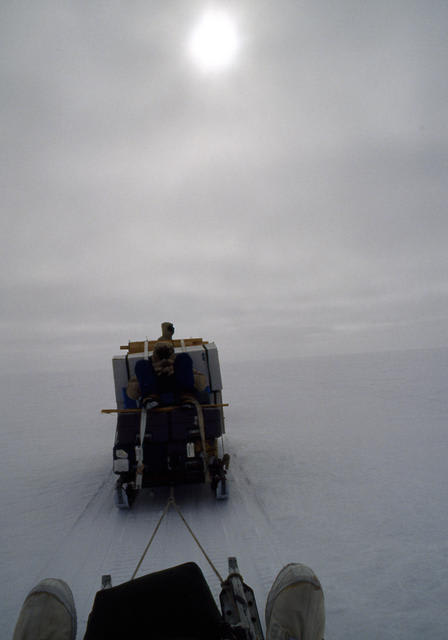Construction on the IceCube Neutrino Observatory officially began at the South Pole, Antarctica, in December, 2003. By that time, the idea had been discussed, designed, and tested for decades. The first tests were held in Greenland in August, 1990. Greenland was ideal for the detector tests; it had a thick layer of ice for deploying detectors and was easier to reach than Antarctica. Bob Morse, of the University of Wisconsin–Madison and the University of Hawaii, provided the timeline below of the short “Greenland Adventure.” The results of those tests led to IceCube’s predecessor, AMANDA, or the Antarctic Muon and Neutrino Detector Array, which began construction in 1993.
Aug 13, 1990: Tim Miller and Bob Morse flew on a C-130 to the GISP-2 test site on Greenland’s ice sheet. Their task? To begin testing the idea for an in-ice neutrino detector.

Aug 14, 1990: The set-up for the experiment was completed and the Photomultiplier Tubes (PMTs) were lower into the hole. By midnight, the high voltage was turned on to power the PMTs.

Aug 15, 1990: Tim, Bob, and their colleagues collected 20 hours’ worth of data (straight from midnight to 8 pm). The day wasn’t over, as the string of PMTs had to be removed and packed for the return trip.

Aug 16, 1990: Once packing was finished, the group boarded the ski-equipped C-130 to leave for Sondrestrom, Greenland, with fingers crossed that the plane would lift off of the icy runway.

Aug 17, 1990: In Sondrestrom, Tim and Bob debriefed with colleagues Bruce Koci and Walt Hancock and explored the island.

Aug 18, 1990: The end of the adventure in Greenland. The return flights began, first to Albany, New York, then to Chicago, Illinois, and finally to Madison, Wisconsin, hand-carrying the experimental equipment.
